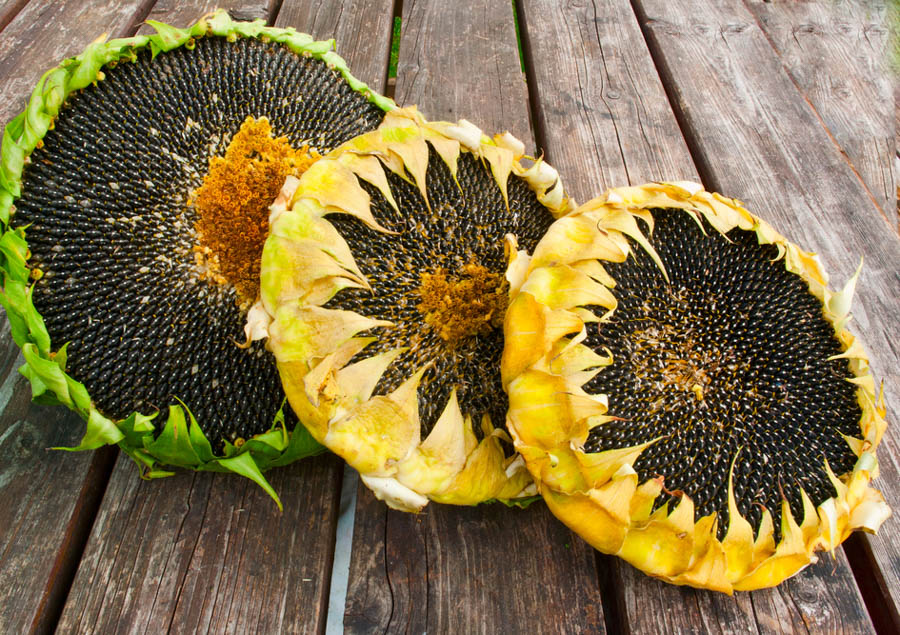Late Season Tips for Growing and Harvesting Sunflower Seeds

by Ann Clary and C. Darren Butler
GardenZeus earns commissions on sales made through links in this article. There is no additional cost to you.
Sunflower garden plants are often relatively carefree until seeds begin to develop. As their large flowers turn into heavy seed heads, many sunflower varieties, especially mammoth varieties, may benefit from extra support. Heavy seed heads may break off before fully mature, stems may break, or whole sunflower plants may be partly uprooted and fall down under the weight of seed heads, particularly in windy areas.
Provide sturdy stakes tied loosely to plants that allow stems to sway in wind but help keep plants supported and unbroken during winds and strong breezes. For smaller stems and seed heads, tie several stems together to provide more support. Use cloth or plastic ties that are at least half-an-inch-to-an-inch wide rather than string or twine to minimize damaging the plants. Stems should be loosely tied, so they are not choked or immobile. Use caution with staking and tying, especially early in the life of sunflowers or before seed heads form, as weak stems develop when they aren’t free to sway with breezes and winds.
Animals love eating sunflower seeds. In most gardens you must protect the maturing seed heads from hungry critters to obtain a good harvest. GardenZeus recommends covering sunflower heads when you notice that seeds are filling out, and before the heads begin to dry. Use a material that allows light and air to reach the sunflower heads, such as cheesecloth, mesh bags with openings too small for bird beaks to enter or sunflower seeds to fall through, old stockings, old sheets, or thin cotton fabric.
If harvesting for seeds, either for eating or later planting, sunflower heads should be harvested when they are completely dry, and petals have fallen. As they mature, the back of sunflower seed heads will turn from green to yellow and eventually to brown when they are ready to harvest. Cut heads from stem with a pair of sharp pruners. Wear sturdy gloves; without them, harvesting sunflower seeds from the heads can be rough on your hands. An easy way to remove mature seeds from the head is to rub two sunflower seed heads together over a bucket or paper bag. When heads are fully mature and dry, seeds are easily knocked into the container below. Alternatively, dry seed heads can be rubbed over a coarse wire screen.
As an alternative to leaving heads to dry in the field, they can be cut a few inches below the head, and then hung to dry. Before cutting, the seeds should have fully developed kernels inside. Heads will usually be fully yellowed and becoming lighter yellow on the way to drying and turning brown.
After being removed from seed heads, seeds are typically dried again. Spread out seeds flat on trays, and finish drying in a warm, dry area, away from humidity and direct light.
Sunflower seeds are most commonly eaten raw or roasted. Once dried, sunflower seeds can be stored in the refrigerator in an airtight container for several months. After being properly dried, sunflower seeds can be roasted with or without salt. To salt sunflower seeds before roasting, soak the seeds overnight in salted water using 1/4 cup of salt to 1 quart of water. After soaking, drain off water, and roast for a several hours in an oven at 200°F. Seeds are ready when crisp.
GardenZeus has customized growing information by plant and zip code. To get started, enter your zip code here.
Other articles of interest: